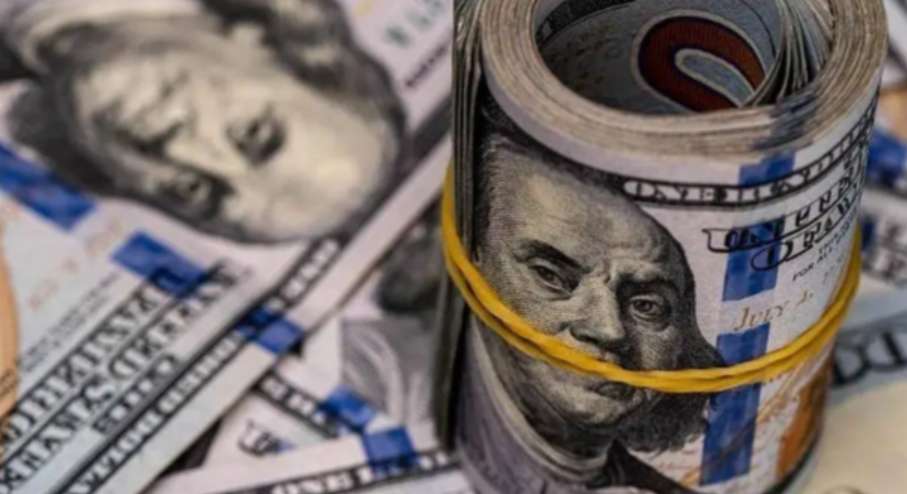Surge of Euro and Pound as Dollar Remains Stalwart
Advertisements
As the sun rose on the financial landscape of 2025, it was hard to ignore the resounding influence of the United States dollarContinuing its ascent from a robust performance in the previous year, the dollar maintained its strong footing, buoyed by impressive employment figures released on a Thursday in early JanuaryOn that day, the dollar soared, particularly against the euro and the British pound, hitting heights not seen in over two years with the euro dipping below 1.0230 and the pound languishing near its lowest levels since April 2022.
This surge wasn’t merely a product of market fluctuation but reflected a deep-seated confidence among investors in the resilience of the American economyThe labor market, as per the latest statistics, indicated a decrease in initial unemployment claims to 211,000—a figure that had not been so low in eight monthsSuch data signify a robust labor market, which has often been a litmus test for economic stability and growth.
The Federal Reserve had already hinted at a cautious approach to interest rate cuts, citing persistent inflation—the rate still exceeding the long-term target of 2%—and a strong domestic economy
The narrative surrounding interest rates was shifting as markets began to speculate about the Fed's future moves, foreseeing a potential reduction of only 0.43 percentage points by the end of 2025. In stark contrast, predictions for the Bank of England and the European Central Bank anticipated even more significant reductions—0.59 points for the UK and 1.08 points for the Eurozone in that same timeframe.
Analysts, such as Adam Button, a chief currency strategist at ForexLive, made bold predictions regarding the dollar's supremacy, asserting that 2025 would present no viable competitor to the dollarBefore the American economy showed any signs of faltering, the dollar would likely continue to reign as the dominant currency, suggesting a long-term trend that investors were keenly aware of.
However, the dollar's strength came at a cost, particularly for the British pound
- ISM: US Factory Activity Shrinks Again in December
- Tesla's Annual Sales Experience First Decline
- Microsoft to Invest $80 Billion in AI
- BYD: The Arrival of Market Value Management
- The Effects of Rising US Productivity
Investors appeared to be reevaluating their bullish positioning on the pound, leading to a sharp decline as they pulled backIn a market that had previously favored the pound, with its performance being the strongest among G10 currencies in the last year, recent events signified a worrying trendOn that fateful Thursday, the pound saw a substantial drop of 1.3%, reaching an alarming low of 1.2354, a stark reminder that currency dynamics can turn swiftly.
This dollar dominance was not just attributed to American metrics; simultaneous challenges in Europe exacerbated the situationEconomic data emerging from both the UK and the Eurozone showed a marked weakness, particularly in manufacturing sectorsThe cloud of rising gas prices only added to the strain on the pound and the euro, reflecting an interconnected web of economic uncertainties that were loomingFor instance, Russia's cessation of gas supplies through Ukraine to EU nations—resulting from the expiration of a five-year agreement—raised flags about energy security within Europe
This situation forced central European countries to seek alternative sources for natural gas, inevitably leading to higher costs.
Data from Gas Infrastructure Europe highlighted the growing pressure on gas supplies, with EU storage facilities depleting at an alarming rate due to harsh winter conditions, further stressing the European energy landscapeConsequently, the tailspin of the euro was linked not only to a strong dollar but also to anticipated trade tariffs and the overall fragility of the Eurozone's export-driven economies.
This precarious state of affairs was compounded by political instability in Germany, the Eurozone's largest economyThe disarray within the German federal government, characterized by a coalition split due to divergent fiscal policies and a lack of trust among political factions, added another layer of complexityA recent power struggle culminated in the removal of the finance minister Lindner, followed by the Free Democratic Party exiting the coalition government involving the Social Democrats and Greens

The outcome of political maneuverings in Germany raised red flags about the Euro’s future strength.
Furthermore, the prospect of early elections loomed as Chancellor Olaf Scholz struggled to garner majority support in a trust vote, throwing the political landscape into further uncertaintyFollowing the dissolution of the Bundestag announced by President Steinmeier, Germany was set to embark on fresh elections aimed at restoring stabilityAnalysts predicted that amid such chaos, the European Central Bank (ECB) would likely adopt a more aggressive stance on interest rate cuts, with traders speculating on at least four rounds of 25 basis points cuts throughout the year.
This financial landscape is marked by rapid changes, and the dollar’s strength serves as both a reflection of confidence in the American economy and as a barometer of the ongoing struggles faced by its European counterparts
With tariffs, low economic growth forecasts for the Eurozone, and a floundering pound, market analysts suggest we may witness a further depreciation of the euro, potentially leading it dangerously close to parity with the dollarSuch projections evoke historical reflections, where the euro being on par with the dollar has been a rarity, and recent market evaluations hint that this parity could become a reality in the coming months.
The looming questions now revolve around the adaptability of Europe’s economic strategies to these shifting currentsShould the Eurozone continue to grapple with its multilayered challenges—political instability, energy security issues, and lagging economic performance—its ability to navigate back to a robust currency standing may hinge on both internal reforms and external trade relationshipsThe specter of declining currency value raises important debates within finance circles, calling for reassessments of traditional economic paradigms.
While the dollar may reign supreme today, reflecting on the past, present, and future factors at play in international currency markets reveals the dynamic and ever-evolving nature of global finance
Leave A Comment